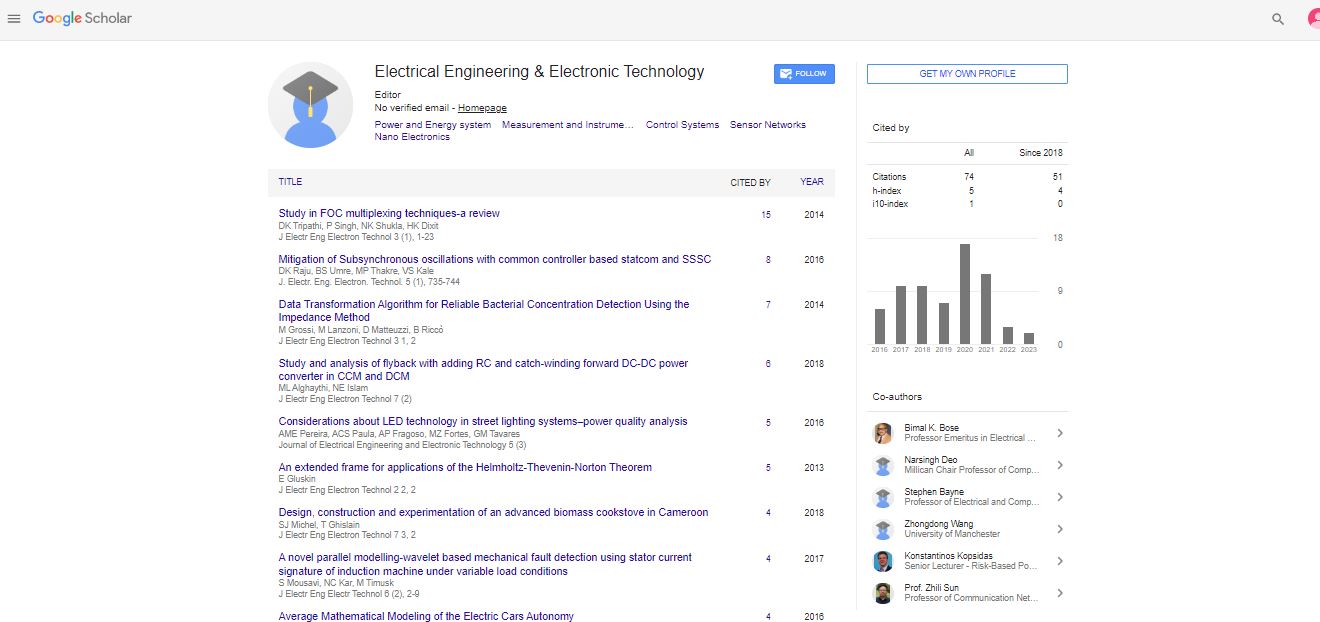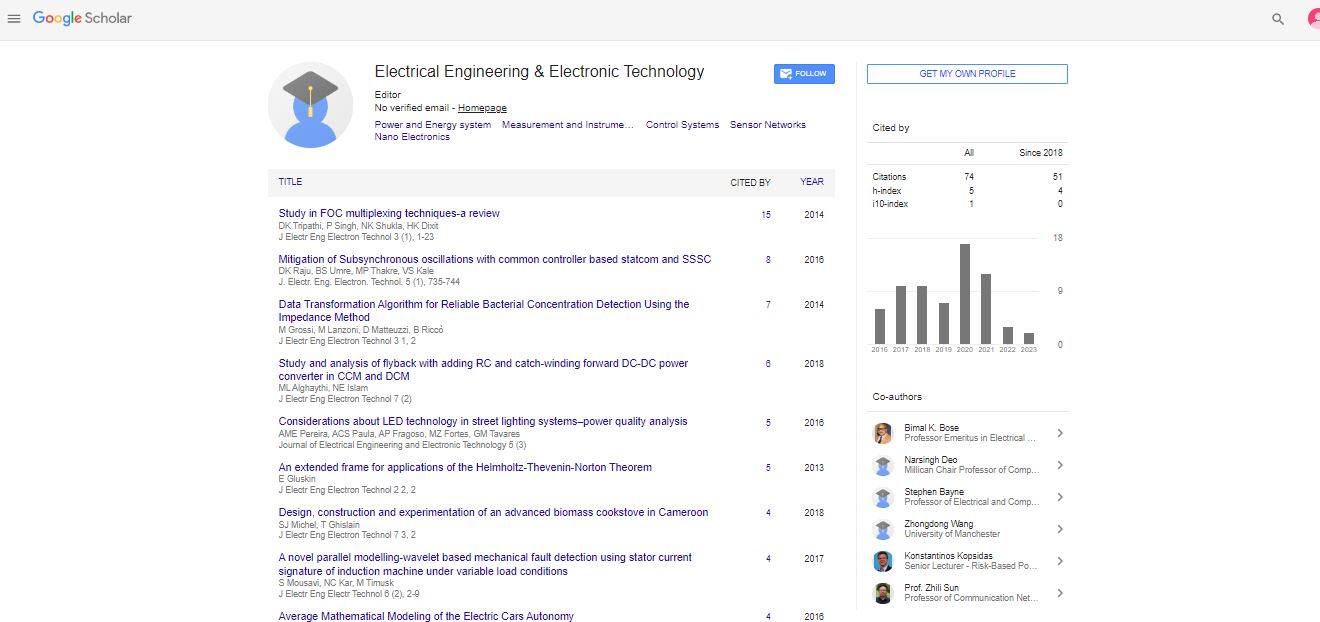Research Article, J Electr Eng Electron Technol Vol: 6 Issue: 4
A Practical Soil Resistivity Electrical Earthing Investigation: Ile-Ife, Nigeria
Apena WO*, Ale TO, Oyetunji SA and Ihiabe YA
Department of Electrical and Electronic Engineering, The Federal University of Technology, PMB 704, Akure, Nigeria
*Corresponding Author : Apena WO
Department of Electrical and Electronic Engineering, The Federal University of Technology, PMB 704, Akure, Nigeria
Tel: 08033446096
E-mail: woapena@futa.edu.ng
Received: August 18, 2016 Accepted: May 03, 2017 Published: May 10, 2017
Citation: Apena WO, Ale TO, Oyetunji SA, Ihiabe YA (2017) A Practical Soil Resistivity Electrical Earthing Investigation: Ile-Ife, Nigeria. J Electr Eng Electron Technol 6:4. doi: 10.4172/2325-9833.1000147
Abstract
Electrical earthing design surge protection relies on accurate determination of soil resistivity down the vertical soil profile. The study investigated soil resistivity of a rocky region in Ile-Ife, Nigeria, were wenner method claimed to be failed. Pole-pole and Schlumberger electrode configurations method were deployed and electrical resistivity (ER) methods involving both horizontal profiling (HP) and Vertical Electrical Resistivity (VES) using an intelligent machine – ABM 300 C. Measurements were made along seven traverses to revealed soil resistivity variation in the region. Forty-eight VES stations were occupied along the traverse using the Schlumberger array with electrodes spacing of (AB/2) varying from 1 to 60 m. The vertical electrical sounding data were interpreted quantitatively by partial curve matching and iterative modelling using WinglinkTM software. Geoelectric sections were generated on each of the traverses using the VES interpretation results. The result of this research revealed variation down the layers (profile). The resistivity ranges from 30 Ohms-m to 4893 Ohms-m and the thickness from 0.44 m to 13.7 m within the conductive layers respectively.
 Spanish
Spanish  Chinese
Chinese  Russian
Russian  German
German  French
French  Japanese
Japanese  Portuguese
Portuguese  Hindi
Hindi 
